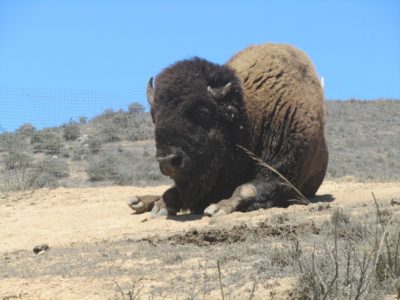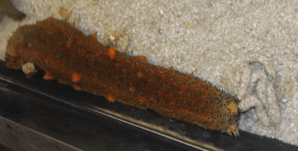
 In the relaxed camp atmosphere it’s almost too easy to find yourself swaying with the palm trees, entranced in the soothing sounds of the ocean while locked in a daze at the clouds rolling overhead but today we are talking all things scat. Surrounded by the beauty in nature, you’re feeling endlessly grateful for the present day at Fox Landing, until one fateful step when you feel an all too familiar squish beneath your sandal. You know it’s not the firm dirt path, you’ve stepped right into a mountain of fox feces! We share a home with a variety of organisms; terrestrial, marine, native or not, every animal inhabiting Catalina Island eats, sleeps, and poops here, just like us! Scat is animal feces or dropping and based on the animal, scat will differ in size, shape, color, consistency, and contents. Scat can be used to identify, learn about, and track animals. Safety first: don’t touch scat…without gloves on!
In the relaxed camp atmosphere it’s almost too easy to find yourself swaying with the palm trees, entranced in the soothing sounds of the ocean while locked in a daze at the clouds rolling overhead but today we are talking all things scat. Surrounded by the beauty in nature, you’re feeling endlessly grateful for the present day at Fox Landing, until one fateful step when you feel an all too familiar squish beneath your sandal. You know it’s not the firm dirt path, you’ve stepped right into a mountain of fox feces! We share a home with a variety of organisms; terrestrial, marine, native or not, every animal inhabiting Catalina Island eats, sleeps, and poops here, just like us! Scat is animal feces or dropping and based on the animal, scat will differ in size, shape, color, consistency, and contents. Scat can be used to identify, learn about, and track animals. Safety first: don’t touch scat…without gloves on!
The Santa Catalina Island Fox, a species of Channel Island fox, can be found roaming our cove. Most often seen at night attempting to break into a trash can or scurrying away from the slightest noise. Their diet consists of mice, birds, eggs, fruit, berries, insects, and for some, anything they are capable of scavenging from humans (Leave no trace!). Fox poop is smelly, small and tubular or log shaped. Droppings are often left in high areas, as a way to mark territory. It is not unusual to find fox feces at the tops of staircases or on rock walls around camp.
 A number of animals have been introduced by humans to Catalina. Included in these non-native species are the herbivorous American Bison and Mule Deer who spend their time grazing the island. Bison consume mostly grasses, herbs, and shrubs. They leave the largest brown poop patties I have ever seen while traversing the mountainsides. Mule deer will graze grasses and herbs as well as eat berries or fruits if they can find any. When the urge becomes too great, a standing mule deer will drop dozens of small, round, or bean shaped pellets in a single release of solid waste.
A number of animals have been introduced by humans to Catalina. Included in these non-native species are the herbivorous American Bison and Mule Deer who spend their time grazing the island. Bison consume mostly grasses, herbs, and shrubs. They leave the largest brown poop patties I have ever seen while traversing the mountainsides. Mule deer will graze grasses and herbs as well as eat berries or fruits if they can find any. When the urge becomes too great, a standing mule deer will drop dozens of small, round, or bean shaped pellets in a single release of solid waste.
Within our ocean and tanks marine organisms also experience the pleasure of excreting their waste. The sea hare and sea cucumber are among some of our greatest producers of scat. A Sea Hare is a squishy bodied invertebrate in the phylum Mollusca. Feasting daily on different species of algae and expelling small, brown-green seed shaped waste throughout our touch tank, shark tank, and octopus tank. Plankton living in the sand or floating in the water column are no match for a hungry sea cucumber. This invertebrate, of the phylum Echinodermata, leaves in its wake a pile of long log shaped stool. Although this camouflaged waste blends in with the sand, our team of aquarists are filled with joy when they spot it and siphon it out of the touch tank.
Sources:
https://www.catalinaconservancy.org/index.php?s=portal
https://www.pe.com/2015/08/27/catalina-island-man-hospitalized-in-bison-attack/


